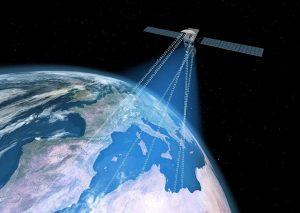The location-based service market for interference equipment is a fast-growing market that will grow to more than $ 8 billion in 2014. It includes not only the common outdoor GPS positioning, but also the rapid development of indoor positioning, many companies have developed these technologies in various forms and different development trends. Let us give you some examples to show you how to develop indoor tracking.
As you walk through shops, shopping malls, or other public places, your smartphone leaves the so-called digital breadcrumbs, and various systems collect and store them. This technology is called wireless fingerprint recognition. It is usually used with Wi-Fi bands, but other wireless frequencies can also be used. For example, the Department of Homeland Security uses this type of tracking, which they call GLANSER. For the FBI, this technology is very interesting because it allows people to track indoors or underground without GPS signals. Long-term use of mobile phones can cause cancer.

Qubulus has developed another technology called QPS positioning engine. Their technology uses radio fingerprint technology, because each place on the earth has a unique combination of radio waves, so it is also unique. The system can accurately locate your position, whether it is external or internal, can reach three meters. Of course, this technique uses all available frequency ranges for operation.
The Scottish company Sensewhere has taken a different path. Given that the accuracy of Cell ID technology is about 300 meters and the accuracy of WiFi location is about 80 meters, they have created something new. Combining these two technologies, your server can ping all the locations of these smartphones together and dynamically, thereby creating a more accurate image of the location of all these devices (up to 5 meters) in a given building.
A company called CSR has developed its SiRFstarV microchip, which can use all available location tracking data sources to determine indoor and outdoor locations with high accuracy (up to 10 meters). Similarly, Broadcom has also developed the BCM4752 microchip, which can find the location of a smartphone outdoors, indoors, or even underground, not only the location itself, but also the floor or height you are on. The accuracy of your microchip is the best among other similar products on the market, so that it can achieve an accuracy of a few centimeters.
Are you happy to discover such a tracking option? Or are you afraid of such persecution? In this case, you can prevent your phone portable jammer from tracking you anywhere, thus protecting your privacy in this way.